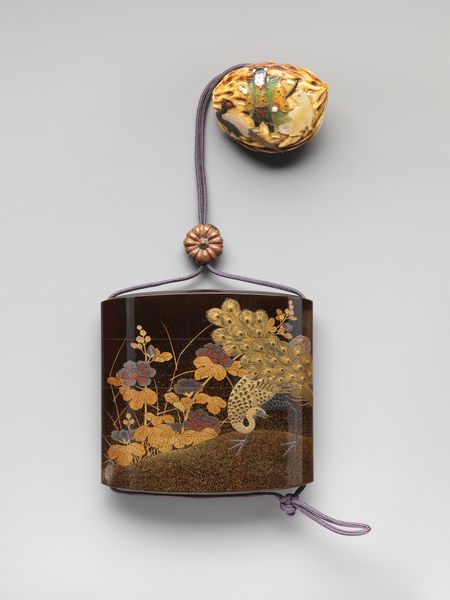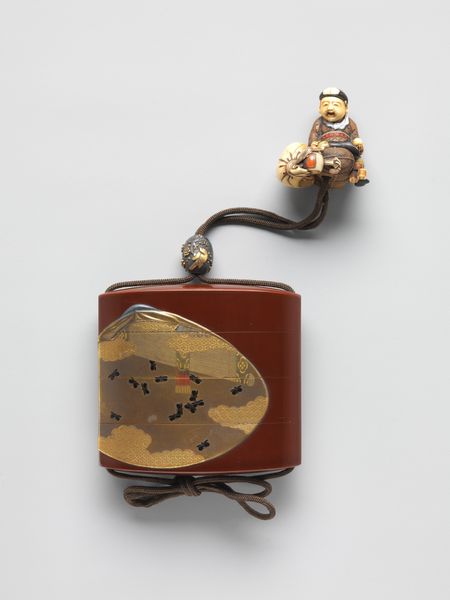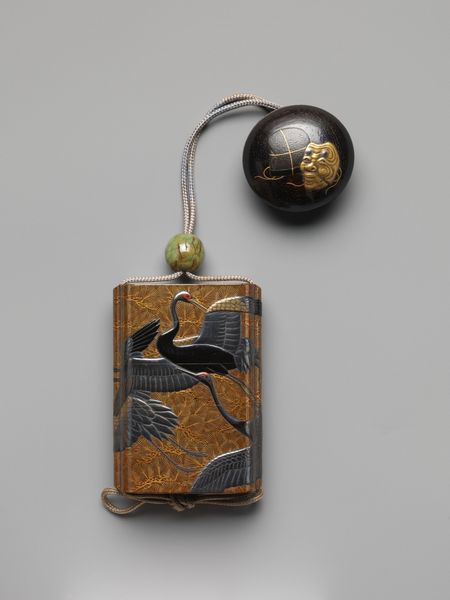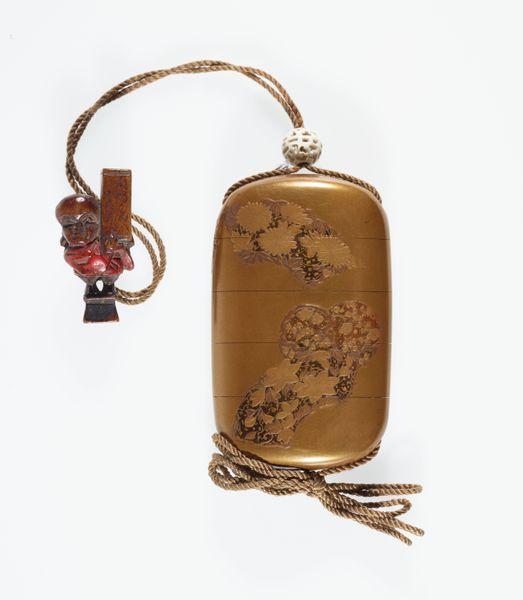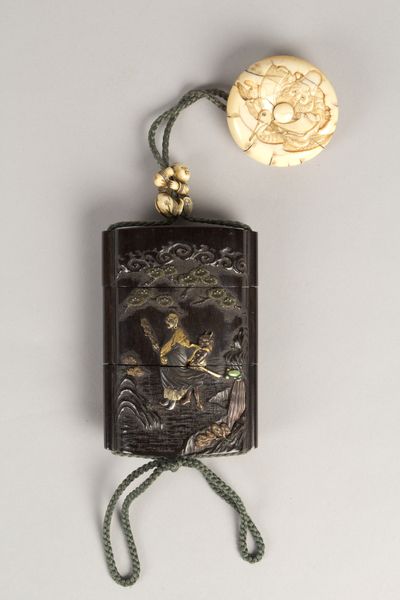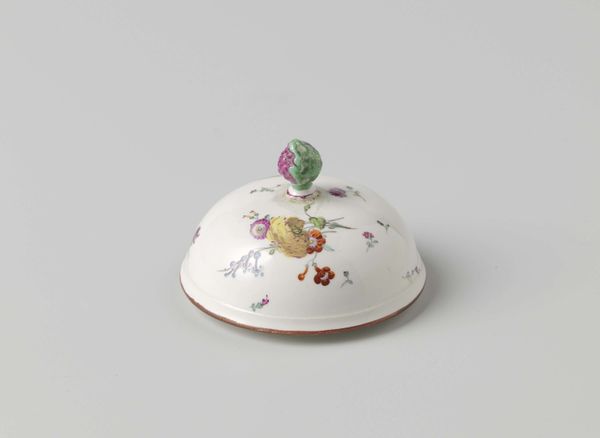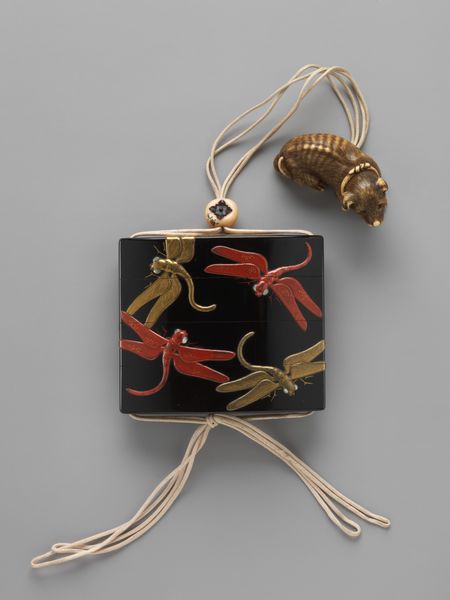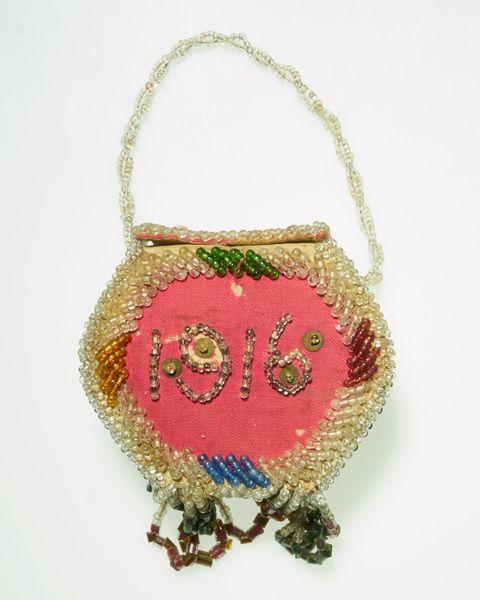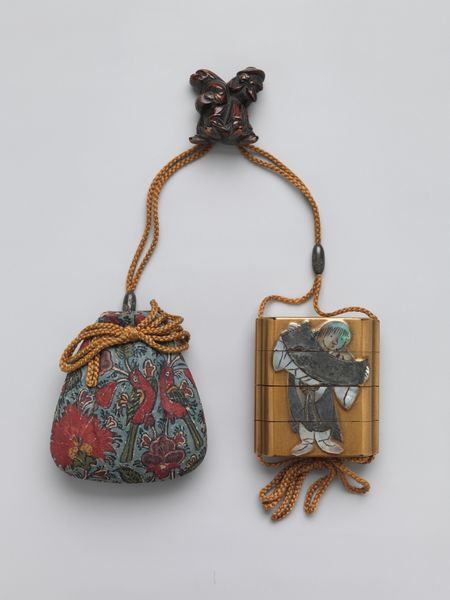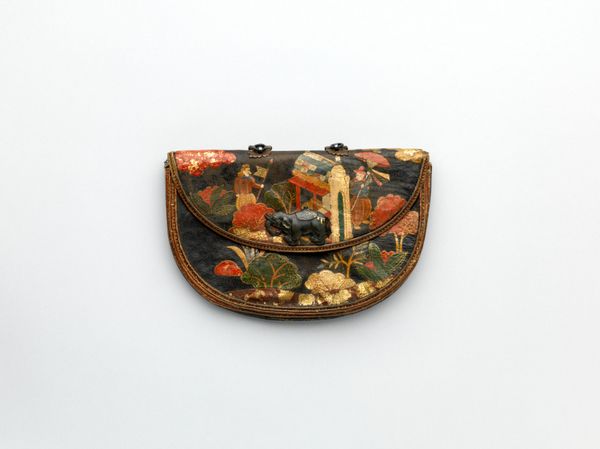
ceramic
#
asian-art
#
ceramic
#
japan
#
ceramic
Dimensions: H. 3 1/16 in. (7.7 cm); W. 3 13/16 in. (9.7 cm); D. 1 3/16 in. (3 cm)
Copyright: Public Domain
Editor: We're looking at an *inrō* with grapevine design by Nomura Choheisai, made sometime between 1750 and 1799. It's a beautiful little object, and what strikes me most is how such a small ceramic piece conveys so much elegance. What are your initial thoughts on how the *inrō* functions within its cultural context? Curator: That's a wonderful observation. This *inrō* wasn't just an aesthetic object; it served a practical purpose. During this period in Japan, traditional clothing lacked pockets. Therefore, things like medicine or seals had to be carried some other way. The *inrō* with its compartments was the perfect solution, suspended from the *obi* sash with a *netsuke* toggle. Editor: Oh, so the beauty is intertwined with everyday life! The grape design seems quite intentional too. Do you think the imagery played a role in its popularity or significance? Curator: Absolutely. Grapevine motifs in Japanese art are often linked to prosperity and abundance. Its adoption within artistic practices underscores not only the object's decorative intent but also reflects the aspirations of the patrons. Considering where these objects might have been displayed or used, how do you think that shaped their artistic value in society? Editor: That's fascinating. I guess displaying such a refined object also signified status, an unspoken visual language within that society, then it became art. I now appreciate how much functionality shaped the art of this historical moment! Curator: Precisely! The public role of such objects, and the visual and material culture surrounding them, became an integral element of art history and of course shaped their cultural reception over time.
Comments
No comments
Be the first to comment and join the conversation on the ultimate creative platform.
